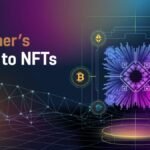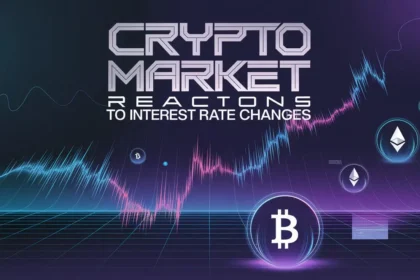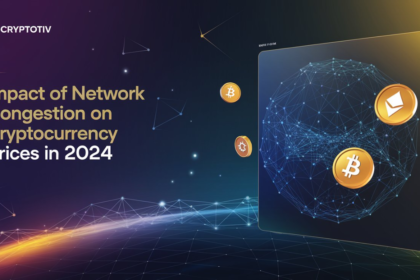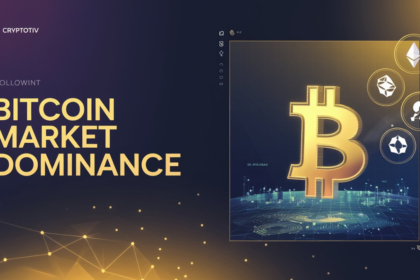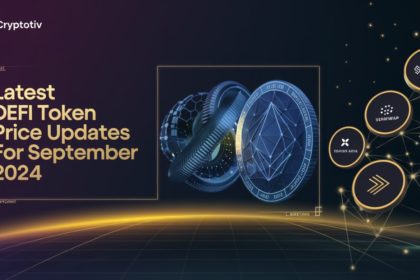The altcoin market in 2024 is experiencing dynamic shifts, with technological advancements, regulatory changes, and institutional investments driving significant market movements. Key Altcoin Market Movements Keeping track of these altcoin price updates is crucial for traders and investors seeking to navigate the volatile crypto landscape. Recent trends like the integration of AI, VR, and the growth of decentralized finance (DeFi) have influenced these movements, marking 2024 as a pivotal year for altcoin market dynamics. In this article, we explore major altcoin price changes, emerging trends, and factors shaping the market this year.
Major Altcoin Price Movements in 2024
The altcoin market in 2024 has been marked by high volatility and unpredictability, driven by various factors like technological innovations, regulatory changes, and shifting investor sentiments. This year has witnessed dramatic price movements across major altcoins, indicating how quickly market dynamics can change. Events such as the integration of new technologies, evolving regulatory landscapes, and institutional involvement have contributed to these fluctuations, demonstrating the dynamic nature of the altcoin sector.
Impact of Technological Advancements on Altcoin Prices
Technological advancements have played a crucial role in shaping altcoin prices throughout 2024. For instance, the integration of AI and VR technologies has brought about significant shifts. Projects like SingularityNET (AGIX), which focuses on decentralized AI services, have garnered attention and influenced market movements. The adoption of AI-driven solutions has increased the demand for tokens supporting such platforms, leading to notable price spikes.
The growth of blockchain interoperability solutions, such as Cosmos’ Inter-Blockchain Communication (IBC) protocol, has also driven market movements by allowing seamless transactions across different blockchain networks. This technological leap has enhanced liquidity and utility, affecting the prices of altcoins associated with these advancements. Furthermore, the continued development of Layer 2 solutions has positively impacted transaction speeds and reduced fees, boosting the appeal and trading volumes of associated altcoins like Polygon (MATIC).
Regulatory Developments Shaping Altcoin Movements
Regulatory changes have had a significant influence on the altcoin market in 2024. Different jurisdictions have approached cryptocurrency regulations with varying levels of clarity and support, directly impacting altcoin prices. In regions with favorable regulations, like the European Union with its MiCA Regulation (Markets in Crypto-assets), altcoins have experienced growth due to the influx of investors seeking compliant and secure trading environments.
Conversely, countries imposing stricter regulations or outright bans on certain cryptocurrencies have led to sudden market shifts. For example, the tightening of regulations in China has caused a decline in the prices of some altcoins closely tied to the Chinese market. A comparative overview of these regulatory changes and their effects on altcoin prices is outlined in the table below:
| Region | Regulatory Development | Impact on Altcoin Prices |
|---|---|---|
| European Union | Implementation of MiCA Regulation | Positive price movement due to clarity and compliance support. |
| United States | Increased regulatory scrutiny by the SEC | Mixed impact; boosts compliant tokens while affecting others negatively. |
| China | Stricter regulations and trading bans | Negative price impact, especially for altcoins with ties to the Chinese market. |
These regulatory shifts have created an environment where altcoins’ price movements are directly linked to the global regulatory narrative. As countries adopt varying stances on cryptocurrency, the market continues to react dynamically, showcasing the need for traders to stay informed about regulatory trends.
Institutional Investment Driving Altcoin Market Growth
Institutional investments have been a key driver of altcoin market growth in 2024. Major institutions, including hedge funds and asset managers, have increasingly allocated portions of their portfolios to established altcoins like Ethereum (ETH) and Binance Coin (BNB). This influx of capital has not only provided a vote of confidence in the long-term potential of these assets but also led to substantial price movements.
For example, the adoption of Ethereum by institutional investors has significantly contributed to its price stability and upward movement, further solidifying its position as a key asset in the crypto market. Similarly, the growing use of Binance Coin within the Binance Smart Chain ecosystem has attracted institutional interest due to its utility in decentralized finance (DeFi) and other blockchain services.
This institutional involvement has created a more mature market environment, where altcoin prices are increasingly influenced by large-scale investments. As a result, the altcoin market now exhibits trends similar to traditional financial markets, with institutional investments serving as a stabilizing force amidst the inherent volatility of the crypto space.
Key Trends in Altcoin Market Movements
The altcoin market in 2024 has emerged as a dynamic ecosystem, heavily influenced by key trends such as technological advancements, the rapid growth of decentralized finance (DeFi), and the ongoing push for scalability. These elements have collectively driven significant market movements, shaping altcoin performance and influencing investor strategies. As the market evolves, traders and enthusiasts must stay attuned to these trends to make informed decisions.
Decentralized Finance (DeFi) and Altcoin Price Volatility
DeFi has been a major catalyst for altcoin price volatility in 2024. The expansion of DeFi platforms has led to a substantial increase in the total value locked (TVL) within DeFi protocols, reaching approximately $60 billion by mid-2024. This growth has had a profound impact on altcoin markets, as the demand for tokens associated with DeFi platforms has surged.
Several factors have contributed to this trend:
- Growth of DeFi Platforms: The emergence of new DeFi protocols and applications, such as lending platforms, decentralized exchanges, and yield farming projects, has drawn more users and capital into the altcoin market. This influx has resulted in increased price movements for tokens tied to these platforms.
- Integration of Layer 2 Solutions: To enhance transaction speed and reduce costs, many DeFi projects have integrated Layer 2 solutions. These integrations have boosted user experience and attracted more participants to DeFi ecosystems, thereby influencing the volatility of associated altcoins.
- Increase in Active DeFi Users: The DeFi sector has seen a 300% increase in active users over the past year, reflecting a growing interest in decentralized financial services. This heightened activity has led to greater trading volumes and, consequently, more significant price swings for DeFi-related altcoins.
Note
volatility is closely linked to the trading volume of these tokens. Periods of high trading activity often lead to price surges, while reduced activity can cause downward pressure on prices. Understanding this correlation is crucial for traders navigating the fast-paced altcoin market.
Scalability and Adoption Trends Affecting Altcoin Prices
Scalability has become a crucial factor affecting altcoin adoption and price stability in 2024. As the demand for decentralized applications and financial services grows, the need for efficient and scalable blockchain solutions has become more pressing.
- Cosmos’ Inter-Blockchain Communication (IBC): One of the key scalability solutions making waves is Cosmos’ IBC protocol, which facilitates seamless interoperability between different blockchains. This capability allows for greater liquidity and enhances the utility of altcoins within the broader ecosystem. As a result, altcoins that leverage IBC have seen increased adoption and more stable price movements.
- Layer 2 Solutions: Projects like Starknet have introduced Layer 2 solutions to improve transaction capacity, reduce fees, and enhance user experience. By mitigating network congestion on the main blockchain, these solutions have led to more efficient trading and usage of altcoins, contributing to their market growth. Real-time tracking of such market trends is vital for understanding their impact on altcoin prices.
Note
Scalability advancements are pivotal in supporting the altcoin market’s expansion. They enable real-time tracking of market trends and ensure that altcoins can handle growing transaction volumes without compromising speed or security.
Impact of Global Events and Macroeconomic Factors
Global events and macroeconomic factors have had a pronounced effect on altcoin price movements in 2024. Several significant events have shaped market dynamics, including shifts in monetary policy, economic data releases, and geopolitical developments.
- Interest Rate Changes: Interest rate decisions by major central banks, such as the Federal Reserve, have had direct implications for the crypto market. Changes in interest rates can influence liquidity flows, leading to rapid price swings in altcoins as investors adjust their portfolios in response to evolving economic conditions.
- Inflation Data: Rising inflation rates have driven investors towards alternative assets like cryptocurrencies. As inflation fears mount, altcoins have seen increased demand, particularly those perceived as hedges against fiat currency devaluation. This trend has led to price fluctuations in the altcoin market.
- Global Events: Geopolitical events, such as regulatory developments and international trade tensions, have also played a role in shaping altcoin price movements. For example, the expansion of Chinese liquidity injections has been linked to periods of growth in the altcoin market, illustrating the impact of global financial trends on the crypto ecosystem.
Real-Time Tracking tools in 2024
In the ever-evolving altcoin market, real-time updates on price movements and trading volumes are crucial for traders and investors aiming to make informed decisions. The altcoin market is known for its high volatility, with prices often reacting to market catalysts, technological advancements, and macroeconomic news. This section provides an overview of how to track real-time altcoin market trends and the factors influencing these frequent price fluctuations.
Real-Time Tracking of Top Altcoins
Monitoring real-time price movements of top-performing altcoins is essential for understanding market dynamics and capitalizing on trading opportunities. Various tracking tools and platforms provide live updates on altcoin prices, trading volumes, and market capitalization. Some of the popular platforms for real-time tracking include:
- CoinMarketCap and CoinGecko: These platforms offer comprehensive data on altcoin prices, market caps, trading volumes, and historical performance. They enable traders to monitor current price trends and identify the top-performing altcoins at any given time.
- Crypto Exchanges: Exchanges like Binance, Coinbase, and Kraken provide real-time charts and trading data for a wide range of altcoins. They offer advanced trading features like order books, live trading volume, and price charts, allowing investors to make real-time trading decisions.
- TradingView: This platform provides advanced charting tools and technical analysis features for traders. It allows users to set price alerts and track market movements across various altcoins using real-time data feeds.
Real-Time Tracking tools: are indispensable for tracking the altcoin market‘s fast-paced nature, helping investors stay informed about real-time market updates and price trends. Traders use these insights to identify potential entry and exit points in the market.
Correlation Between Altcoin Prices and Trading Volume
The relationship between altcoin price movements and trading volumes is a key factor influencing market behavior. In many cases, spikes in trading volume are closely correlated with significant price changes. Higher trading volumes often indicate increased market activity and can lead to rapid price movements, either upward or downward.
For example, during periods of positive market sentiment or bullish news, trading volumes for specific altcoins tend to surge, leading to upward price swings. Conversely, during market sell-offs or bearish sentiment, high trading volumes can result in sharp price declines. Understanding this correlation is crucial for traders aiming to anticipate market movements.
- Volume Indicators: Traders often use technical indicators such as On-Balance Volume (OBV) and Volume Weighted Average Price (VWAP) to gauge the strength of a price trend based on trading volume. These indicators help assess whether a price movement is supported by strong trading activity, providing insights into the market’s direction.
- Volume Spikes: Sudden increases in trading volume can act as early indicators of potential price reversals or breakouts. For instance, a significant increase in volume during a price breakout may signal the beginning of a new trend, while declining volumes may indicate a trend’s weakening.
The correlation between trading volume and altcoin prices can help traders make informed decisions and reduce the risks associated with market volatility.
Significant Altcoin Price Swings and Market Sentiment
Market sentiment plays a pivotal role in driving significant altcoin price swings. Throughout 2024, various altcoins have experienced dramatic price changes influenced by factors such as technological announcements, regulatory developments, and global economic events.
- Positive Sentiment and Bullish Trends: Positive news such as technological upgrades, successful partnerships, or favorable regulatory announcements often lead to bullish sentiment in the market. For example, when an altcoin project announces a significant technological milestone, it can trigger a price rally as traders anticipate future growth.
- Negative Sentiment and Bearish Trends: Conversely, events like regulatory crackdowns, security breaches, or negative macroeconomic news can lead to bearish sentiment, causing sudden price drops. For instance, increased regulatory scrutiny on certain cryptocurrencies has, at times, resulted in widespread sell-offs, leading to notable declines in altcoin prices.
Traders often gauge market sentiment through various channels, including social media, news outlets, and sentiment analysis tools, to anticipate market movements. By understanding the influence of sentiment on altcoin prices, traders can navigate the market more effectively, recognizing the underlying factors that drive price swings.
Weekly Altcoin Market Performance Reports
Weekly market reports are vital for altcoin traders and investors, providing a snapshot of recent market movements and helping them navigate the highly dynamic crypto landscape. These reports offer insights into the top-performing altcoins, key price drivers, and liquidity trends that have shaped the altcoin market over the past week. By analyzing these factors, investors can make more informed decisions and anticipate potential market shifts.
Top-Performing Altcoins This Week
This week, several altcoins have stood out due to their notable performance and resilience amid market volatility.
- Solana (SOL): Solana has continued its upward momentum, showcasing impressive price gains driven by its rapid transaction speeds and low fees. Recent network upgrades and increasing activity in Solana-based DeFi and NFT ecosystems have contributed to its status as one of the top-performing altcoins this week.
- Chainlink (LINK): LINK has seen significant price movements due to its growing adoption in DeFi protocols and integration with various blockchain networks. This week, its price surged as a result of partnerships with key DeFi platforms and the launch of new Chainlink services, boosting its utility and demand.
- Ethereum (ETH): Ethereum remains a leading player, with steady growth in its price and trading volume. The continued adoption of Ethereum for DeFi, NFTs, and smart contract applications, along with the ongoing transition to Ethereum 2.0, has solidified its position in the market.
Weekly altcoin price updates reflect the evolving landscape, with new projects and established players alike contributing to market dynamics. Traders and investors are closely watching these top-performing altcoins for signals of future trends.
Major Altcoin Price Drivers and Catalysts
Several key drivers and catalysts have influenced altcoin prices this week, impacting market sentiment and trading activity. Understanding these factors is crucial for interpreting market behavior and anticipating future movements.
- Technological Upgrades: Recent upgrades and technological advancements have been major price drivers. For example, the integration of Layer 2 solutions in various altcoin networks has enhanced scalability and reduced transaction costs, attracting more users and traders. Similarly, the launch of new DeFi protocols and enhancements in blockchain interoperability have boosted investor confidence in the long-term potential of certain altcoins.
- Regulatory Announcements: Regulatory developments continue to play a significant role in shaping the altcoin market. This week, announcements regarding clearer cryptocurrency regulations in regions like the European Union have positively impacted market sentiment. Conversely, increased scrutiny by regulatory bodies in other jurisdictions has caused caution among investors, leading to mixed market movements.
- Market Sentiment Shifts: Market sentiment has seen fluctuations due to macroeconomic factors, such as interest rate changes and global economic data releases. Positive sentiment has been driven by factors like institutional adoption, increased utility of altcoins in DeFi, and growing interest in Web3 technologies.
These major altcoin price drivers have had varying effects across different altcoins, highlighting the market’s complex and interconnected nature.
Weekly Overview of Altcoin Market Liquidity
Liquidity trends are a critical aspect of the altcoin market, affecting price movements and trading activity. This week, the market has experienced notable shifts in liquidity, influenced by several factors.
- Increased Trading Volume: Higher trading volumes in certain altcoins have contributed to greater liquidity, allowing for smoother market operations and reduced price slippage during trades. This trend is particularly evident in altcoins with active DeFi ecosystems and strong utility, such as Ethereum and Solana.
- Liquidity Shifts in DeFi: The expansion of DeFi platforms has led to changes in liquidity distribution. The total value locked (TVL) in DeFi protocols has seen fluctuations, impacting the liquidity of altcoins tied to these platforms. Additionally, the use of automated market makers (AMMs) and liquidity pools has provided new avenues for liquidity management, enhancing market stability.
- Market Maker Activity: Market makers have been actively participating in the altcoin market, contributing to altcoin market liquidity trends. Their involvement helps maintain order book depth and narrow bid-ask spreads, ensuring a more efficient trading environment for altcoin investors.
Understanding these liquidity trends is essential for navigating the altcoin market, as liquidity levels can significantly influence price volatility and the ability to execute trades efficiently.
Related articles
- Cryptocurrency Market Cap Changes
- How to Track Crypto Prices
- New DeFi Protocol Launches and Market Impact
- Risk Management in Crypto Trading
The altcoin market movements in 2024 have been marked by a blend of technological advancements, regulatory changes, and evolving investor sentiments. Key trends like the growth of DeFi, scalability solutions, and institutional investments have played significant roles in shaping the market. Understanding these dynamics is crucial for traders and investors to navigate the unpredictable altcoin landscape.











